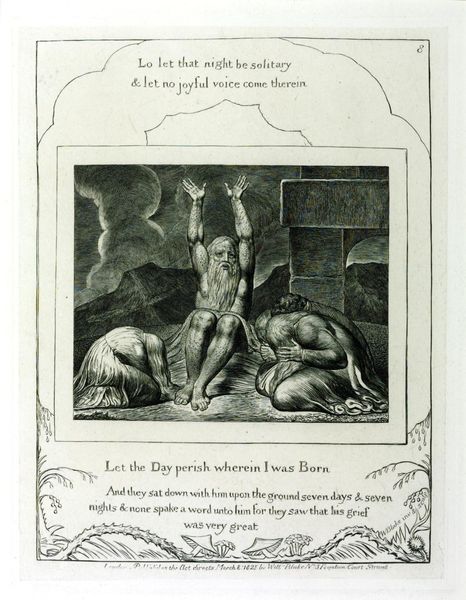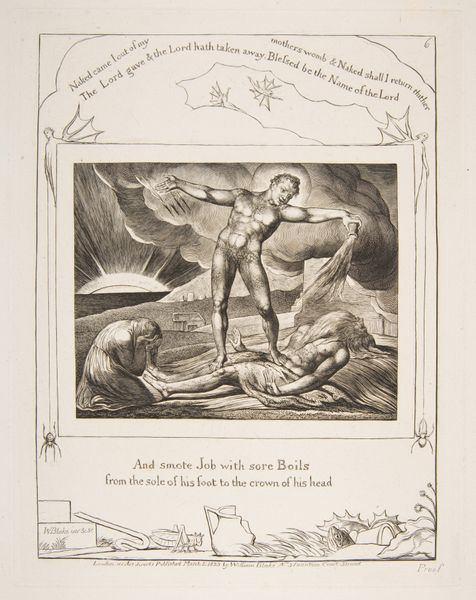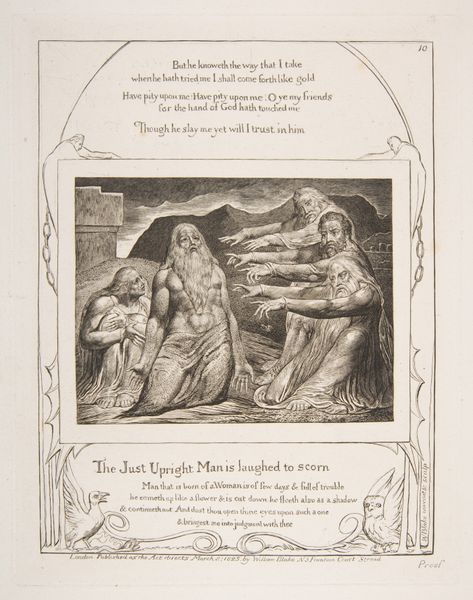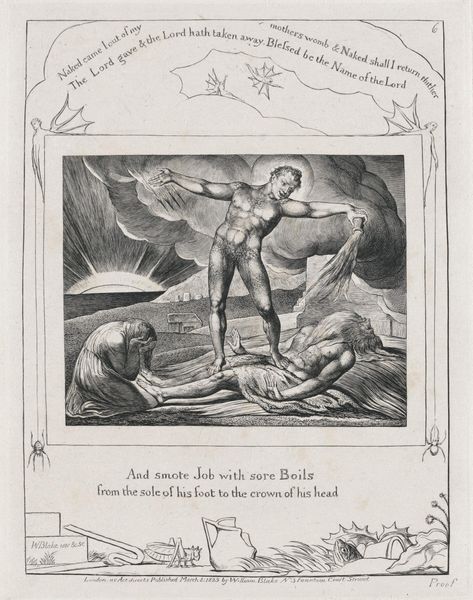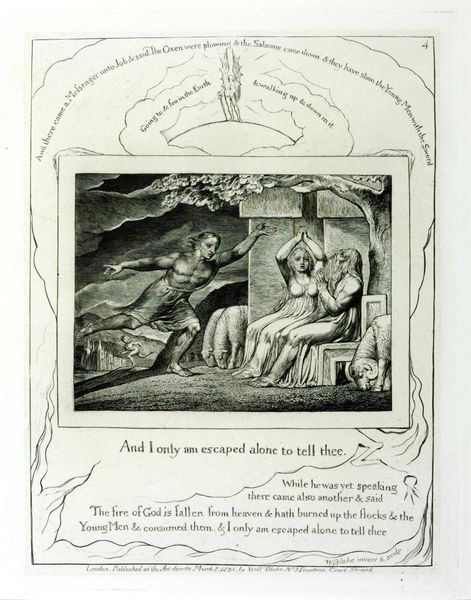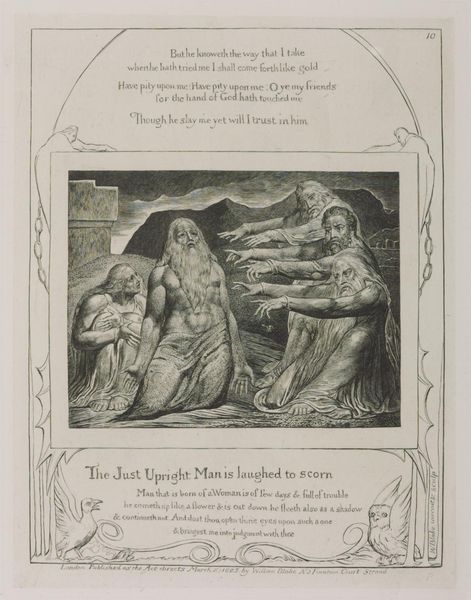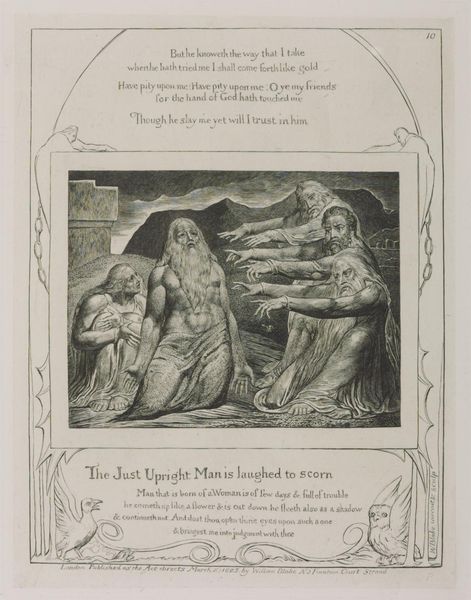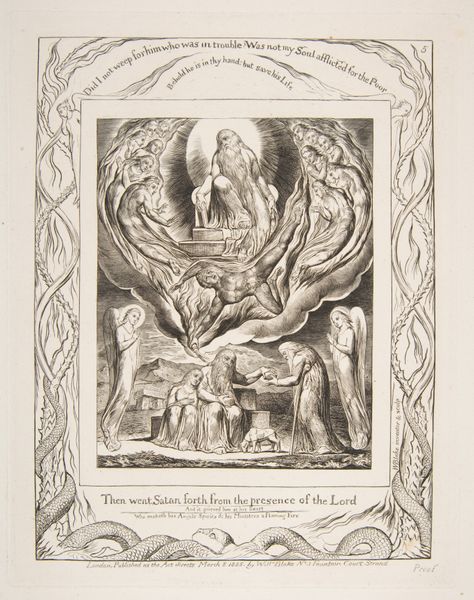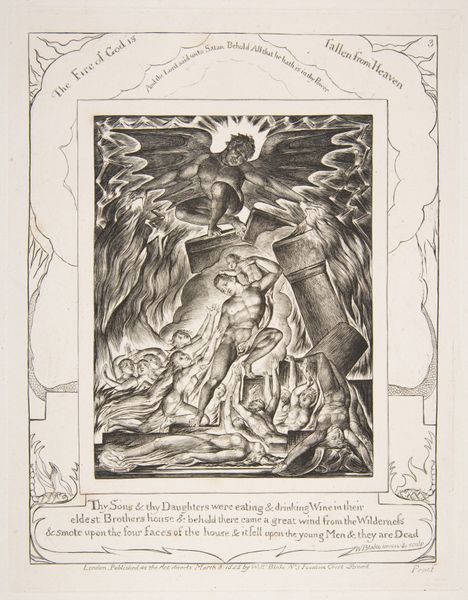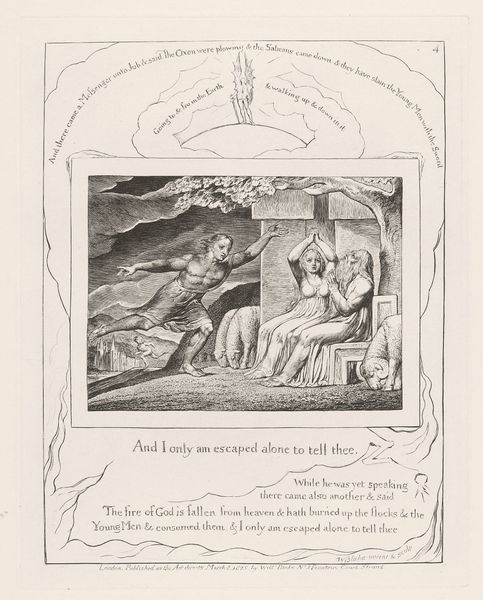
drawing, print
#
pencil drawn
#
drawing
#
allegory
# print
#
pencil sketch
#
landscape
#
figuration
#
romanticism
#
line
#
history-painting
Dimensions: plate: 8 9/16 x 6 9/16 in. (21.7 x 16.7 cm) sheet: 16 1/4 x 10 7/8 in. (41.3 x 27.6 cm)
Copyright: Public Domain
This etching from 1825 by William Blake depicts Job in despair, surrounded by grieving figures. Blake was a visionary artist working in a time of great social upheaval in England, deeply skeptical of institutions and authority. Blake's image creates meaning through visual codes and cultural references, drawing heavily from the biblical Book of Job. But Blake wasn't simply illustrating scripture. He lived during the Industrial Revolution and was critical of its dehumanizing effects. His art often challenged the established Church and the rationalism of the Enlightenment, offering instead a mystical and deeply personal vision. Blake self-published his works, circumventing the Royal Academy's control over the art world. Understanding Blake requires delving into his poetry, his radical political beliefs, and the religious and intellectual climate of his time. We need to look at the institutions he critiqued, the audiences he sought to reach, and the social conditions that shaped his unique artistic vision. By looking into these things, we can appreciate how art reflects and challenges social norms.
Comments
No comments
Be the first to comment and join the conversation on the ultimate creative platform.
